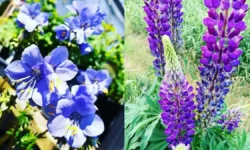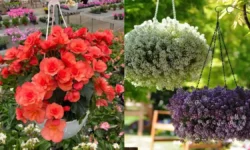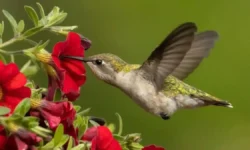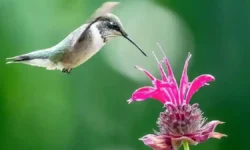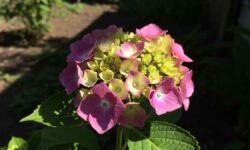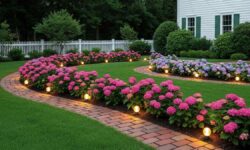If your garden leans cool and leafy, you can still host a hummingbird parade. In fact, some of the most romantic, cottage-y borders I’ve ever planted were built around shade flowers that attract hummingbirds—soft plumes, elegant spires, dangling bells—each one a tiny nectar bar tucked under trees. Below I’m sharing a full, practical guide to design, plant selection, and care. You’ll find species-by-species profiles (with identification tips, USDA zones, sun and soil, bloom season, and color notes), plus real-world tricks for staging a lush shade flowers that attract hummingbirds display that’s easy to maintain and ridiculously pretty.
Personal confession: I used to think hummingbirds “needed” blazing sun. Then I tucked a handful of woodland perennials under my maple and watched those tiny jets hover all afternoon. Now, shade flowers that attract hummingbirds are my secret weapon for cool corners and calm, moody beds.
Table of Contents
Shade Flowers That Attract Hummingbirds: The Big Picture
A hummingbird-friendly shade bed leans on tubular or bell-shaped blossoms, layered height, and a steady bloom relay from spring to fall. A mix of perennials + a few annual “color engines” keeps the nectar coming. Do this, and your shade flowers that attract hummingbirds garden becomes a dependable stopover—even on the hottest days, when dappled light is a relief.
Quick design notes (what actually works)
-
Plant in drifts (3–7 of a kind) for easy foraging.
-
Stack heights: groundcover/low mounds, mid-border spires, and a few taller anchors near the back fence.
-
Prioritize sequenced bloom times so something is flowering April–October.
-
Water deeply and mulch; shade = tree root competition.
-
Pair nectar plants with safe perches nearby (shrub or trellis) and clean water.
Columbine (Aquilegia spp.) — graceful woodland bells made for hummingbirds
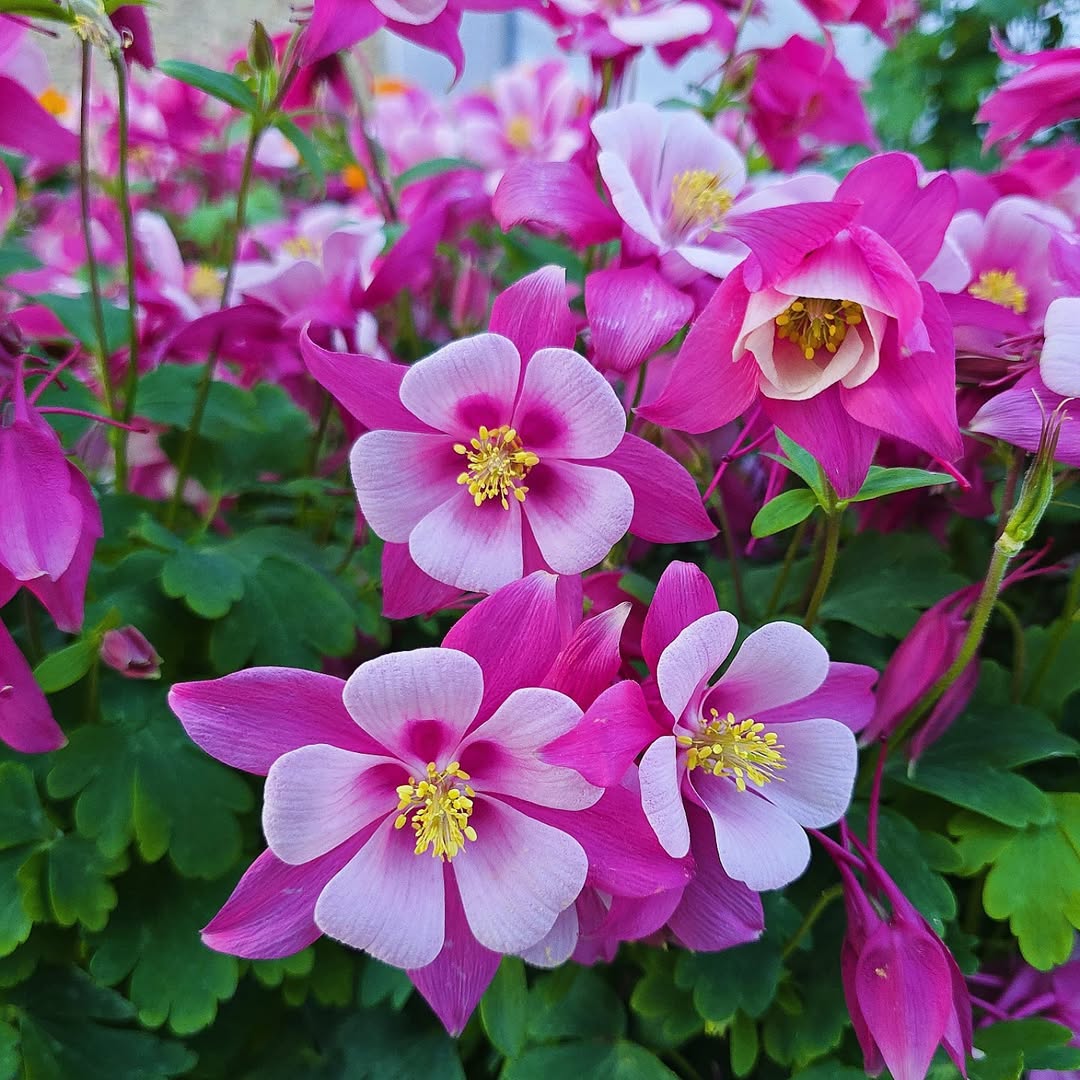
Type: Perennial | USDA Zones: 3–8 | Sun: Partial shade (dappled) | Soil: Moist, well-drained, humus-rich | Bloom: Spring to early summer | Colors: Red/cream native forms; countless cultivars in pink, salmon, orange, purple, blue, yellow | Height: 1–3 ft | Scientific name: Aquilegia spp.
Columbine’s spurred blossoms are basically precision straws for hummingbirds. The nodding flowers hang like jewelry over ferny foliage, and they show up right when migrants reach many backyards in spring. In shade, the color reads saturated and painterly, which is why I always stage columbine up front where you can admire the details.
Tuck plants into moisture-retentive soil and let a few flowers go to seed—columbine politely self-sows and will knit into a natural woodland carpet. If you want a classic for hummingbirds, choose red tones or the native Aquilegia canadensis—a favorite in many gardens for its nectar-rich, tubular spurs.
Coral Bells (Heuchera spp.) — foliage fireworks with nectar “spritzers”
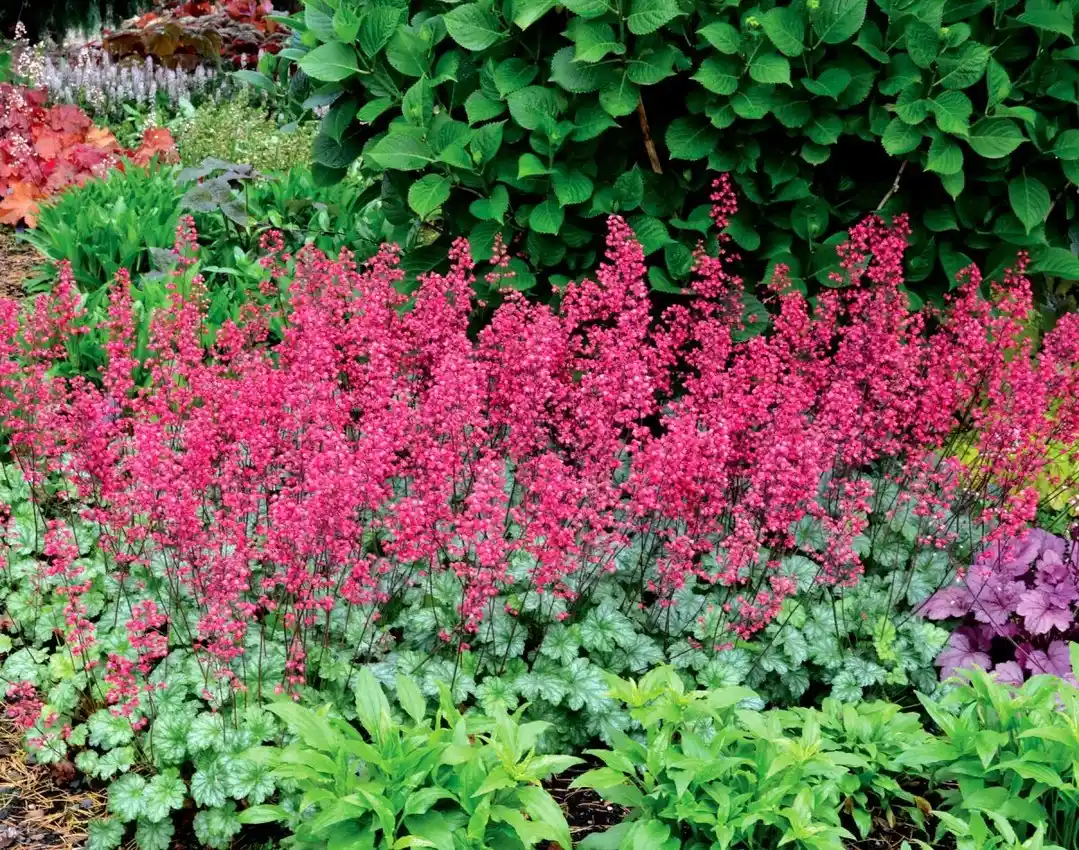
Type: Perennial | USDA Zones: 3–9 (var. dependent) | Sun: Part shade (some cultivars manage deeper shade) | Soil: Well-drained, slightly acidic to neutral | Bloom: Late spring to early summer (with periodic spikes later) | Colors: Leaves from lime to charcoal; flowers pink/red/white | Height: 8–18 in foliage mounds; 2 ft in bloom | Scientific name: Heuchera spp.
I plant coral bells first for foliage, then get a bonus hummingbird party when the airy bloom wands pop. The tiny bell flowers are nectar treats—especially the red-blooming types like Heuchera sanguinea. Mix dark purple-leaf forms with chartreuse neighbors for contrast; then let the slim flower spikes pull in hummers.
They’re fantastic edging plants for shady paths and look chic in containers. Give them drainage (no soggy pots) and morning light with afternoon shade. In early summer, those pinky blooms become a surprise “snack station” for hummingbirds cruising your shade border.
Bleeding Heart (Lamprocapnos spectabilis) — romantic hearts on arching stems
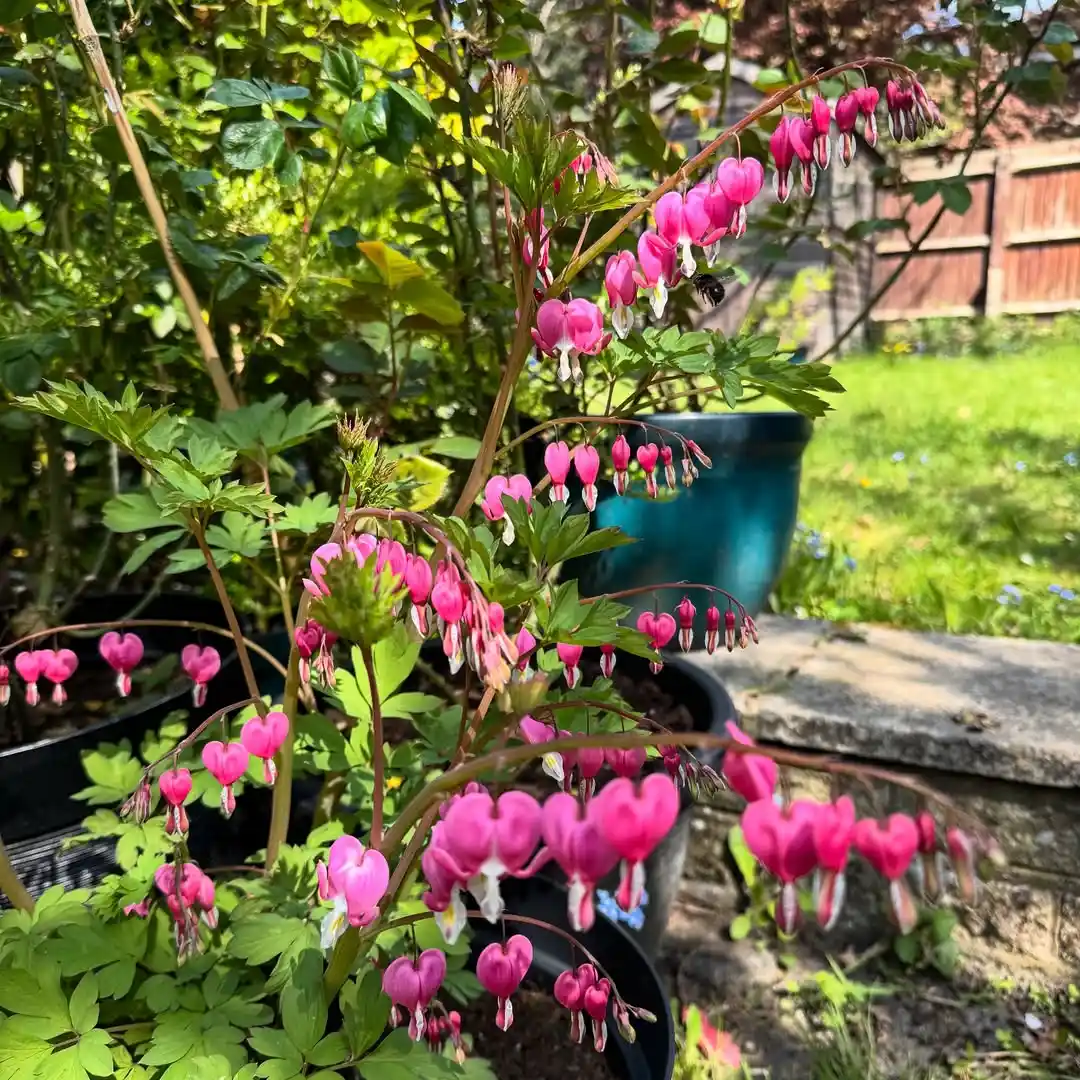
Type: Perennial | USDA Zones: 3–9 | Sun: Partial to full shade | Soil: Moist, rich, well-drained | Bloom: Spring | Colors: Pink with white tips; also white forms | Height: 2–3 ft | Scientific name: Lamprocapnos spectabilis
Everyone knows the swoon-worthy hearts; fewer realize hummingbirds zip to them with ease. Plant bleeding heart to frontload nectar in spring shade, then understory friends (hostas, ferns) take over when it goes summer-dormant. Keep roots evenly moist—mulch is your friend—and let the foliage yellow naturally to recharge the crown.
I like to mingle bleeding heart with woodland phlox for a soft pink/blue duet under trees. It reads like a vintage garden postcard—and yes, it’s absolutely part of a shade flowers that attract hummingbirds lineup.
Hosta (Hosta spp.) — shade workhorse with sneaky-good nectar
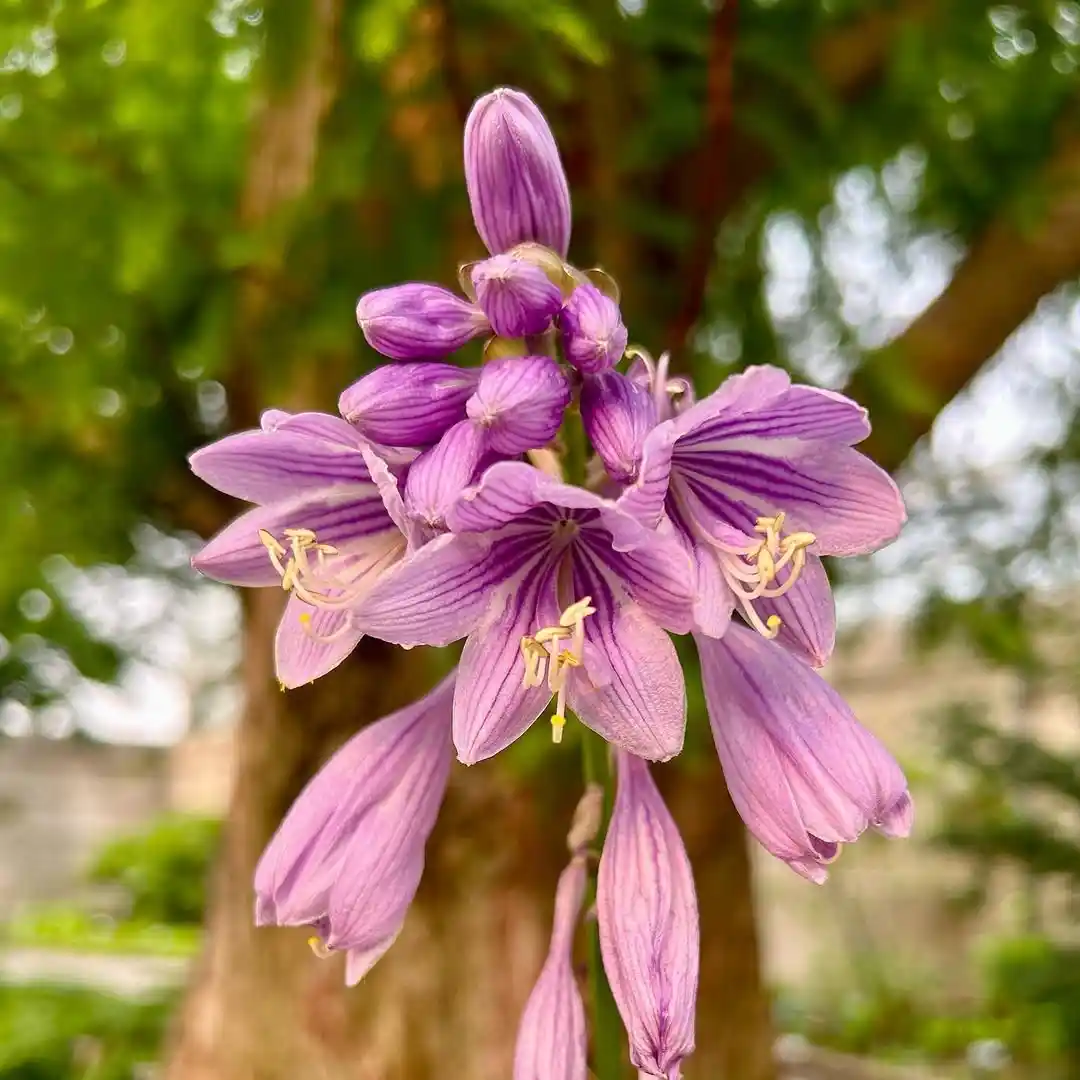
Type: Perennial | USDA Zones: 3–9 | Sun: Partial to full shade | Soil: Rich, well-drained, consistently moist | Bloom: Mid to late summer (varies) | Colors: Foliage in greens, blues, variegations; flowers white-lavender, often fragrant | Height: 6 in to 3 ft (variety) | Scientific name: Hosta spp.
We grow hosta for the sculptural leaves… then summer happens and—surprise—tall scapes of tubular flowers open. Hummingbirds treat them like a mid-season refueling station. If you garden in dense shade, hosta is an easy green blanket that also participates in your shade flowers that attract hummingbirds plan. Some varieties (e.g., ‘Royal Standard’, ‘Guacamole’) are extra fragrant and nectar-rich.
Keep soil evenly moist (tree roots drink a lot), and cluster different leaf sizes so the bloom scapes rise at varied heights—hummers love the vertical buffet.
Fuchsia (Fuchsia spp.) — dangling lanterns for dappled patios
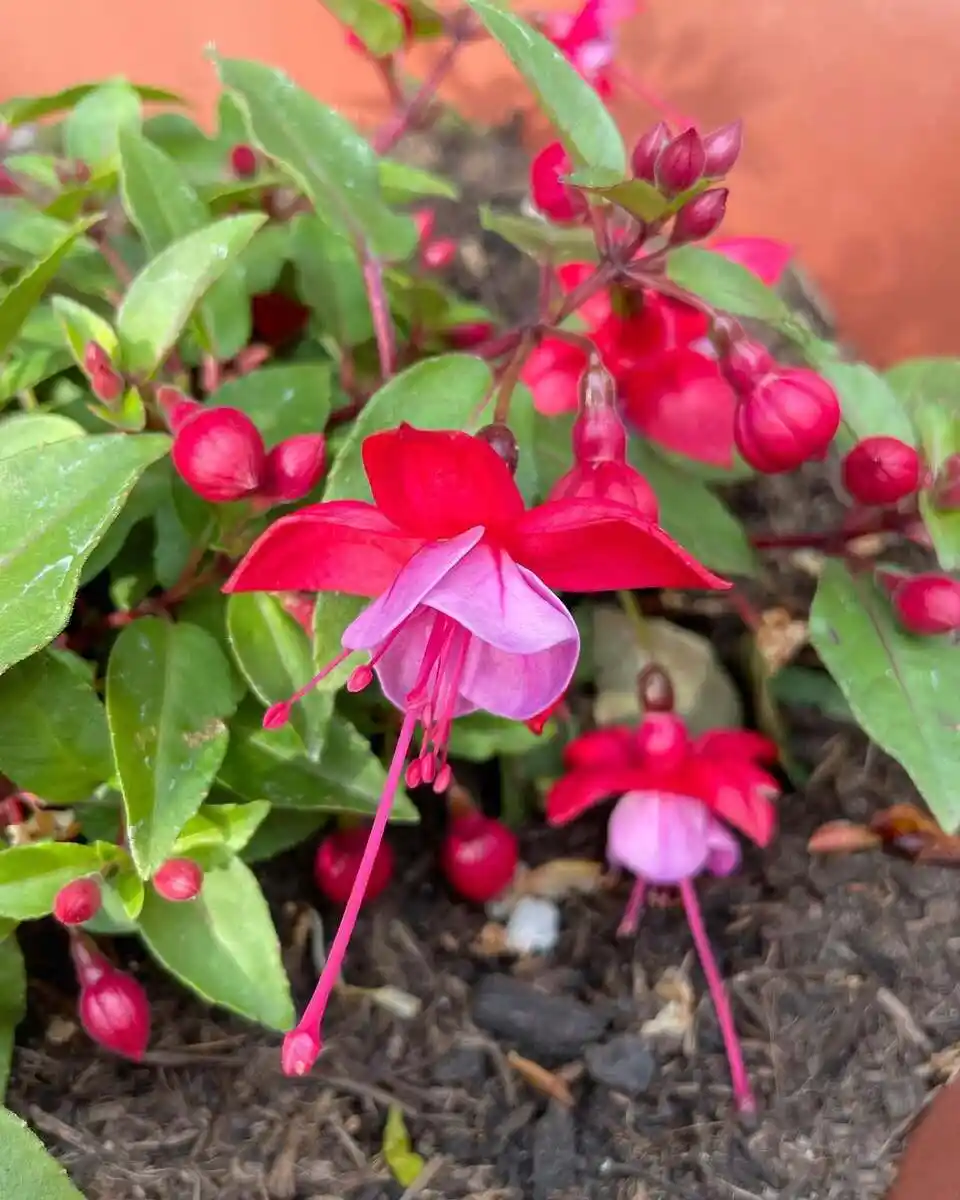
Type: Tender perennial to annual (zone dependent) | USDA Zones: 6–11 by species/variety; commonly grown as annuals | Sun: Partial to full shade (protect from hot afternoons) | Soil: Moist, fertile, well-drained | Bloom: Late spring through fall with feeding | Colors: Pink, purple, red, white bicolors | Scientific name: Fuchsia spp.
Fuchsias are hanging-basket royalty for shade flowers that attract hummingbirds. The pendant blossoms (little ballerinas!) are irresistible, especially near a sitting area where you can watch hover-feeding up close. Pinch early for bushiness and feed lightly every 2–3 weeks for waves of blooms. Protect from harsh afternoon sun and heat spikes.
In mild climates they can be perennial; in colder zones I treat them as annual color and overwinter a favorite plant indoors. Either way, they’re the definition of “high drama, low glare” for shady porches.
Cardinal Flower (Lobelia cardinalis) — electric scarlet spikes that glow in shade
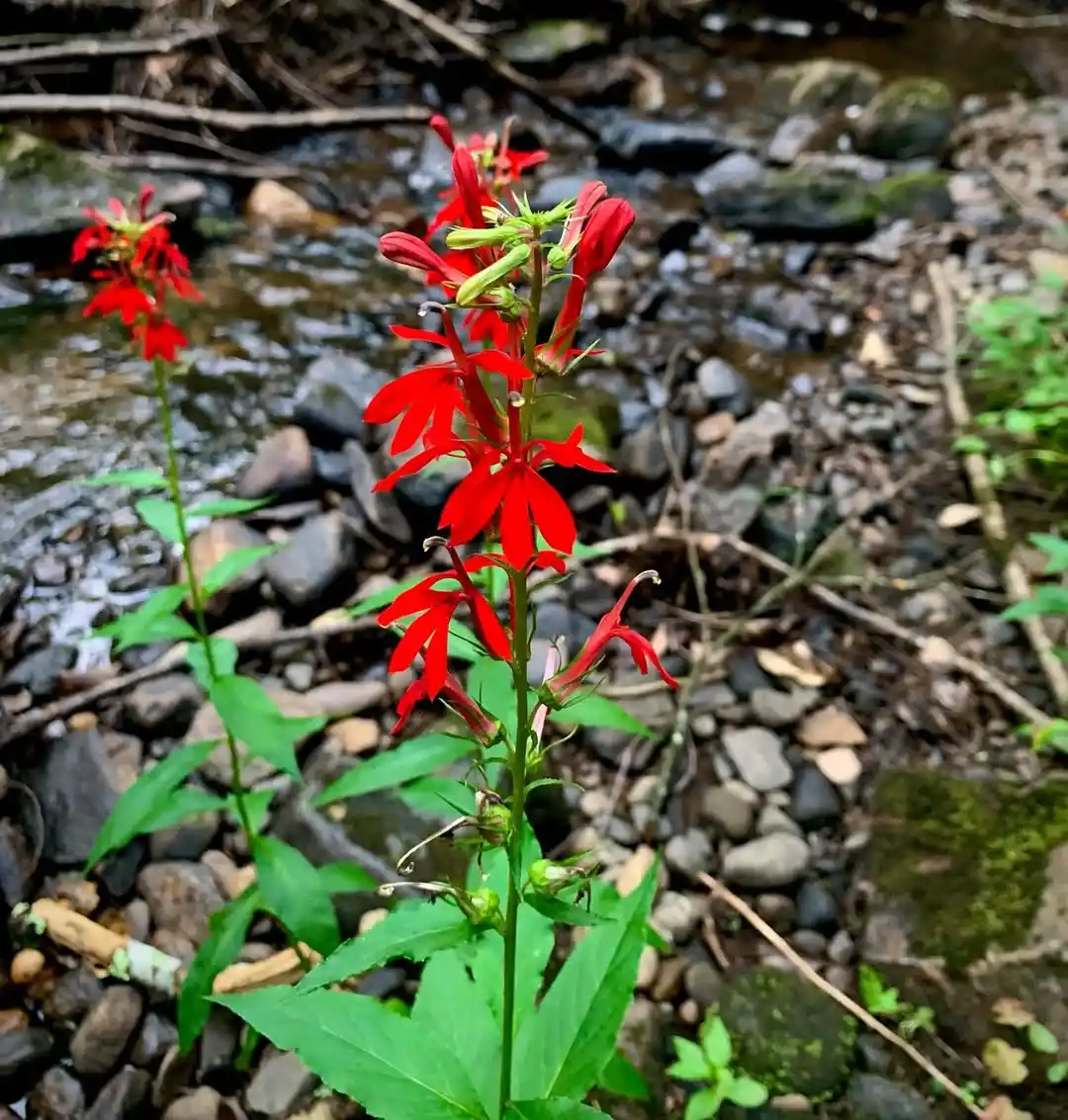
Type: Perennial | USDA Zones: 3–9 | Sun: Full sun to partial shade | Soil: Consistently moist, rich; tolerates wet sites | Bloom: Late summer | Colors: Scarlet red (primary), also selections in pink/white | Height: 2–4 ft | Scientific name: Lobelia cardinalis
When most perennials are winding down, cardinal flower lights the shade with lipstick-red towers. It’s a native wetland star, so think rain gardens, pond edges, or any spot that stays evenly moist. The saturated red reads even richer against deep greens, and hummingbirds will stake it out like a favorite café.
Work it into the back third of the bed for height and late-season nectar. I deadhead lightly to stretch bloom and let a few spikes seed around (you’ll get a gentle, naturalized colony).
Red Buckeye (Aesculus pavia) — small-tree fireworks for shade margins
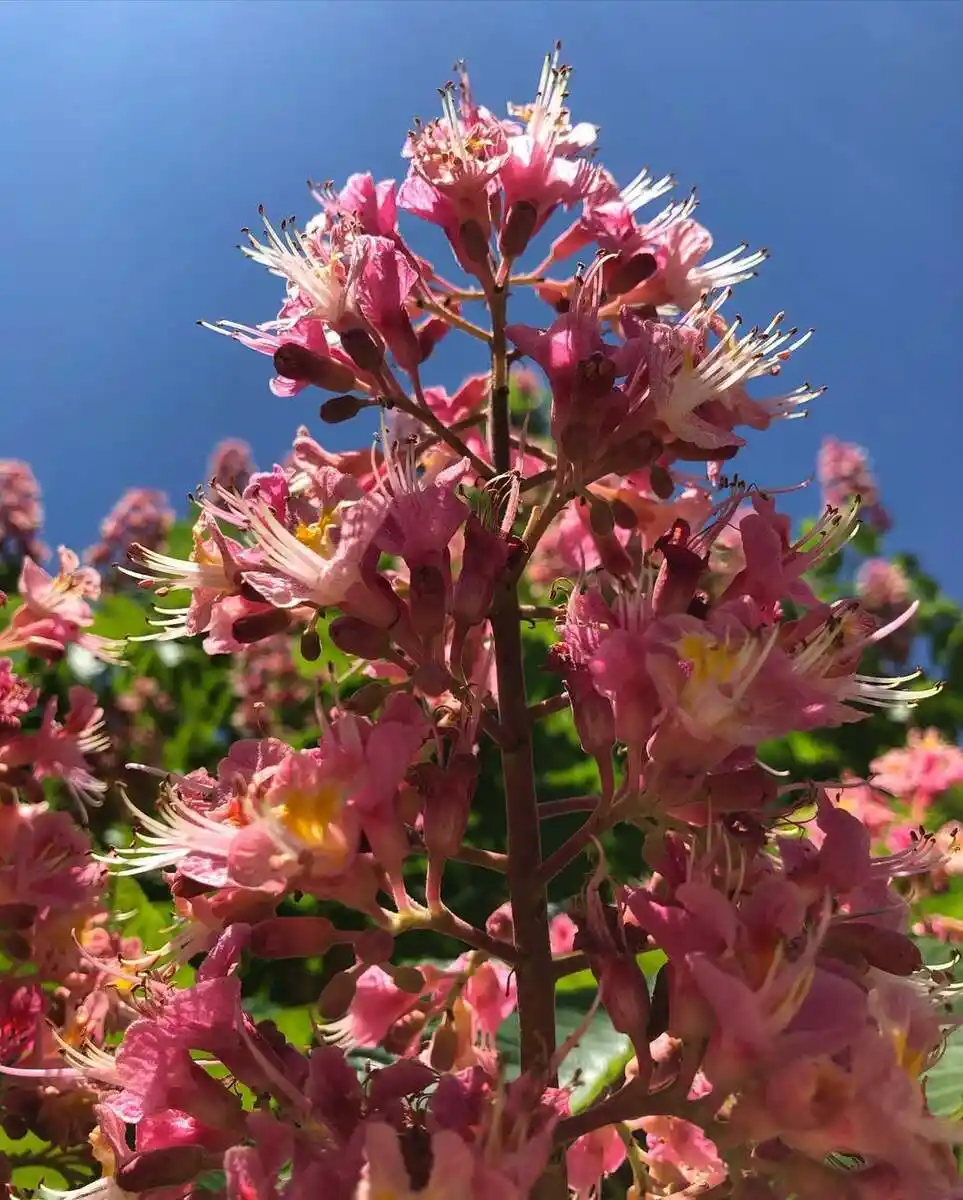
Type: Deciduous shrub/small tree | USDA Zones: 4–9 (some sources note 4–8) | Sun: Sun to partial shade | Soil: Moist, well-drained; adaptable | Bloom: Spring (late April–June in many regions) | Colors: Red tubular clusters | Height: 10–25 ft | Scientific name: Aesculus pavia
Need a structural anchor for your shade flowers that attract hummingbirds bed? Red buckeye brings vertical presence and hummingbird-ready clusters in spring. It’s native, handsome, and happy in bright shade edges. Do note: all parts are toxic if ingested—site away from nibbling pets/livestock.
Give it a cool, partially shaded corner with decent moisture; pruning is seldom needed. The spring bloom is an early-season nectar flag that says “this yard is open.”
Impatiens (Impatiens walleriana + native I. capensis) — season-long color clouds
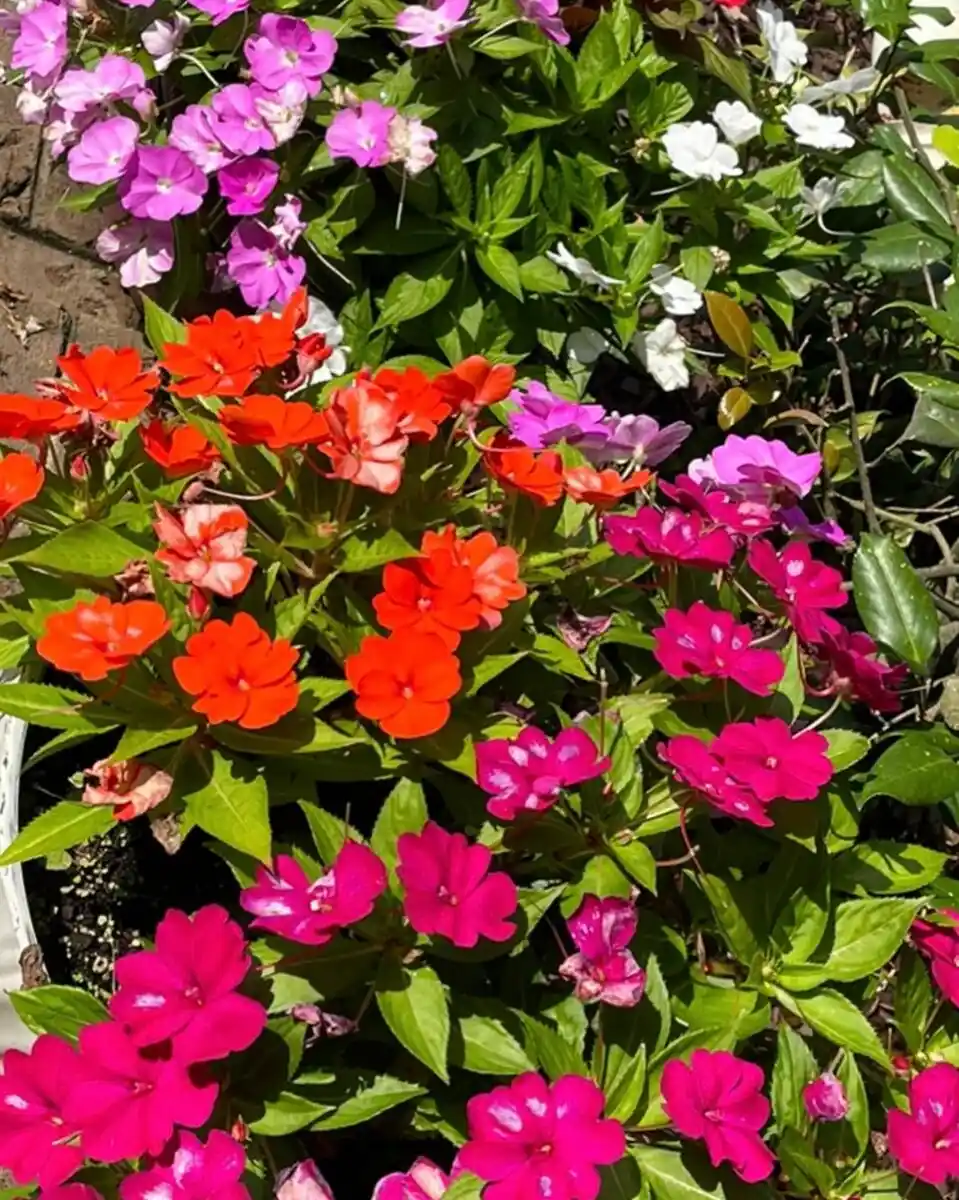
Type: Annuals in most regions (native jewelweed is self-sowing annual) | USDA Zones: Tender; often grown as annuals (I. walleriana); native I. capensis from seed | Sun: Partial to full shade | Soil: Moist, well-drained | Bloom: Spring to frost (walleriana) | Colors: Pink, salmon, orange, red, white, bicolors | Scientific names: Impatiens walleriana, Impatiens capensis
I use impatiens like watercolor: big swaths under trees to pull light forward. The nonstop blooms give hummingbirds reliable nectar, especially in warm, humid summers. Keep the soil evenly moist and feed lightly; they return the favor with carpets of color.
If you like a wild, natural vibe, tuck in native jewelweed (I. capensis). It thrives in dappled woodland shade and hums with visits when the orange trumpets open.
Red Turtlehead (Chelone obliqua) — crisp pink “turtle” blooms in damp shade
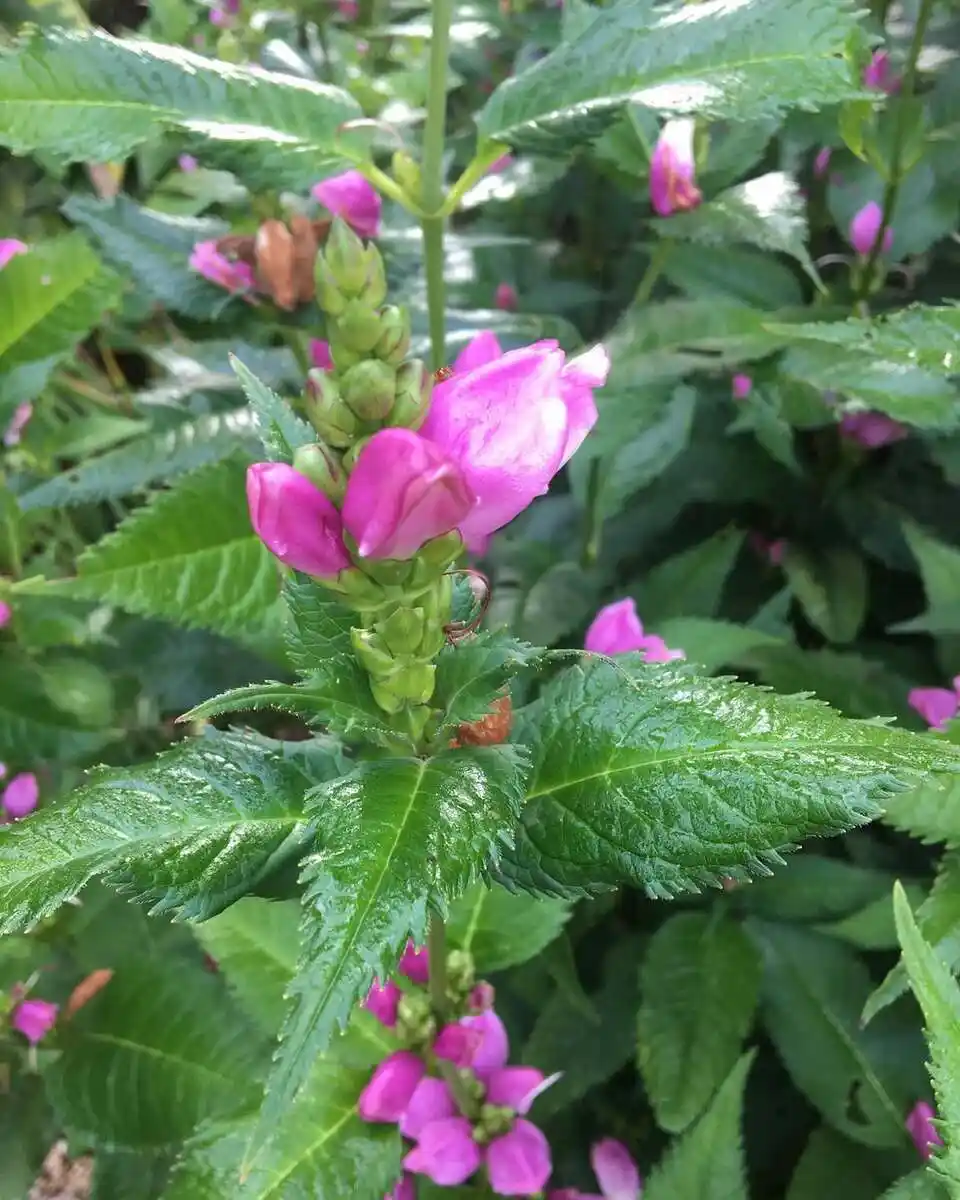
Type: Perennial | USDA Zones: 3–9 | Sun: Partial to full shade | Soil: Moist, rich, well-drained; great for rain gardens | Bloom: Late summer to fall | Colors: Pink to rose | Height: 2–3 ft | Scientific name: Chelone obliqua
Turtlehead looks architectural: glossy foliage and tight clusters of tubular flowers that really do resemble a turtle’s head. It loves moisture and is perfect along shady downspouts or swales. Hummingbirds treat the pink tubes like reliable late-summer sips. Mulch to keep roots cool and deadhead to tidy if you like.
This one makes a clean, upright counterpoint to looser shade plants—pair beside hostas or ferns for texture play.
Weigela (Weigela florida) — classic shrub with hummingbird-ready trumpets
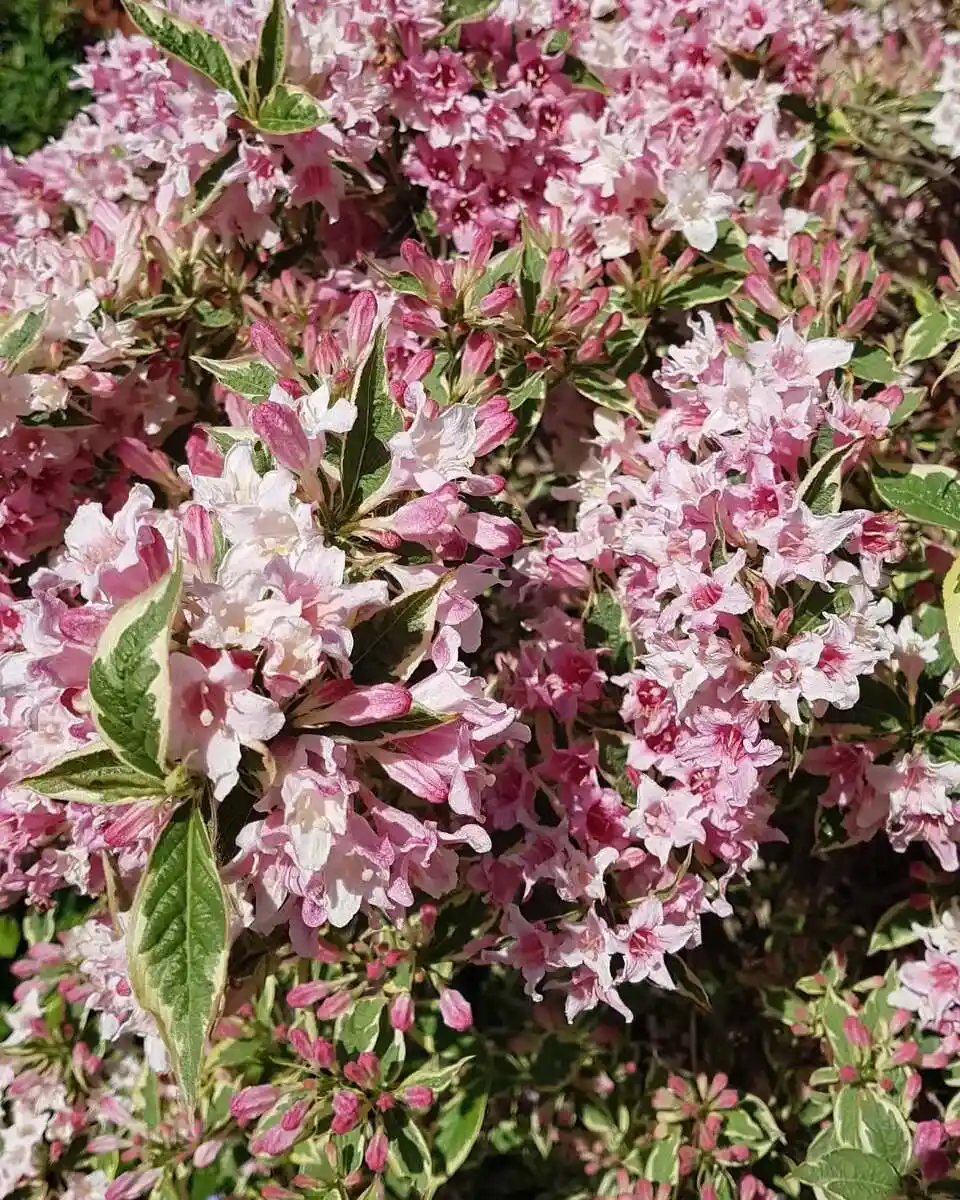
Type: Deciduous shrub | USDA Zones: 3–8 | Sun: Partial shade to sun (many bloom best with some light) | Soil: Well-drained, moderately fertile | Bloom: Late spring; some rebloom | Colors: Red, pink, white | Height: 4–8+ ft (var.) | Scientific name: Weigela florida
While weigela is often planted in sunnier beds, select varieties still flower beautifully in partial shade—and those trumpet blooms are hummingbird candy. Prune just after the main spring flush to encourage a denser shape and (often) a modest summer encore.
Use a red-blooming cultivar near a woodland edge where the color really “pops” against dark greens. It’s a handsome way to broaden your shade flowers that attract hummingbirds palette with a true shrub.
Dragon Wing Begonia (Begonia × hybrida) — tropical gloss for dim corners
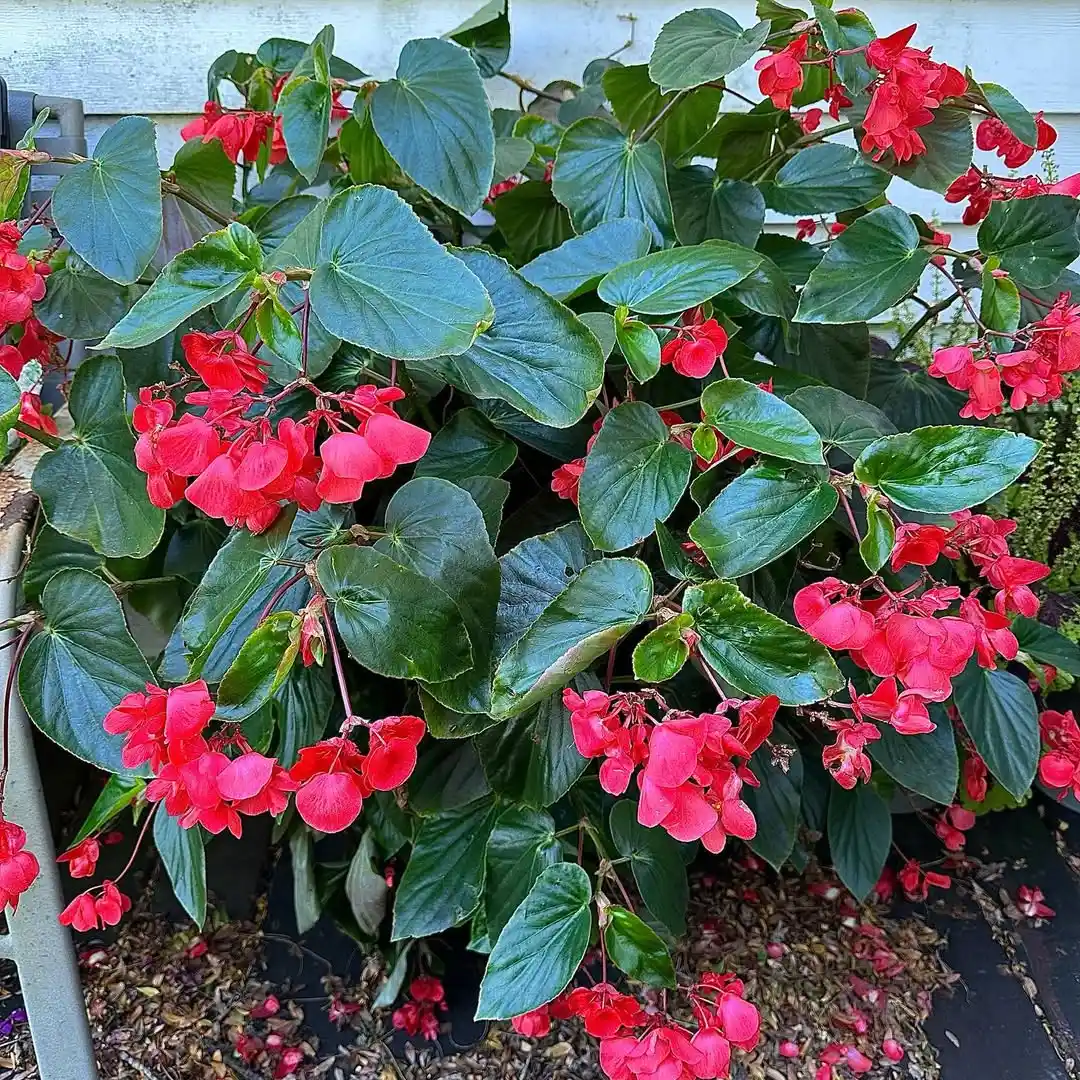
Type: Tender perennial/annual | USDA Zones: Perennial in 10–11; annual elsewhere | Sun: Partial to full shade | Soil: Well-drained, fertile | Bloom: Spring to frost | Colors: Red, pink | Height: 1.5–2.5 ft | Scientific name: Begonia × hybrida
Lush, winged leaves + generous clusters of bell-like blooms make dragon wing begonia a shade showstopper. In pots by the back steps or massed under trees, the constant flowers keep hummingbirds checking in all season. Fertilize lightly every couple of weeks and keep evenly moist for the steadiest display.
It’s a fabulous foil to matte hosta leaves, and it keeps your shade flowers that attract hummingbirds plan humming along when spring perennials pause.
Woodland Phlox (Phlox divaricata) — true-blue clouds for spring shade
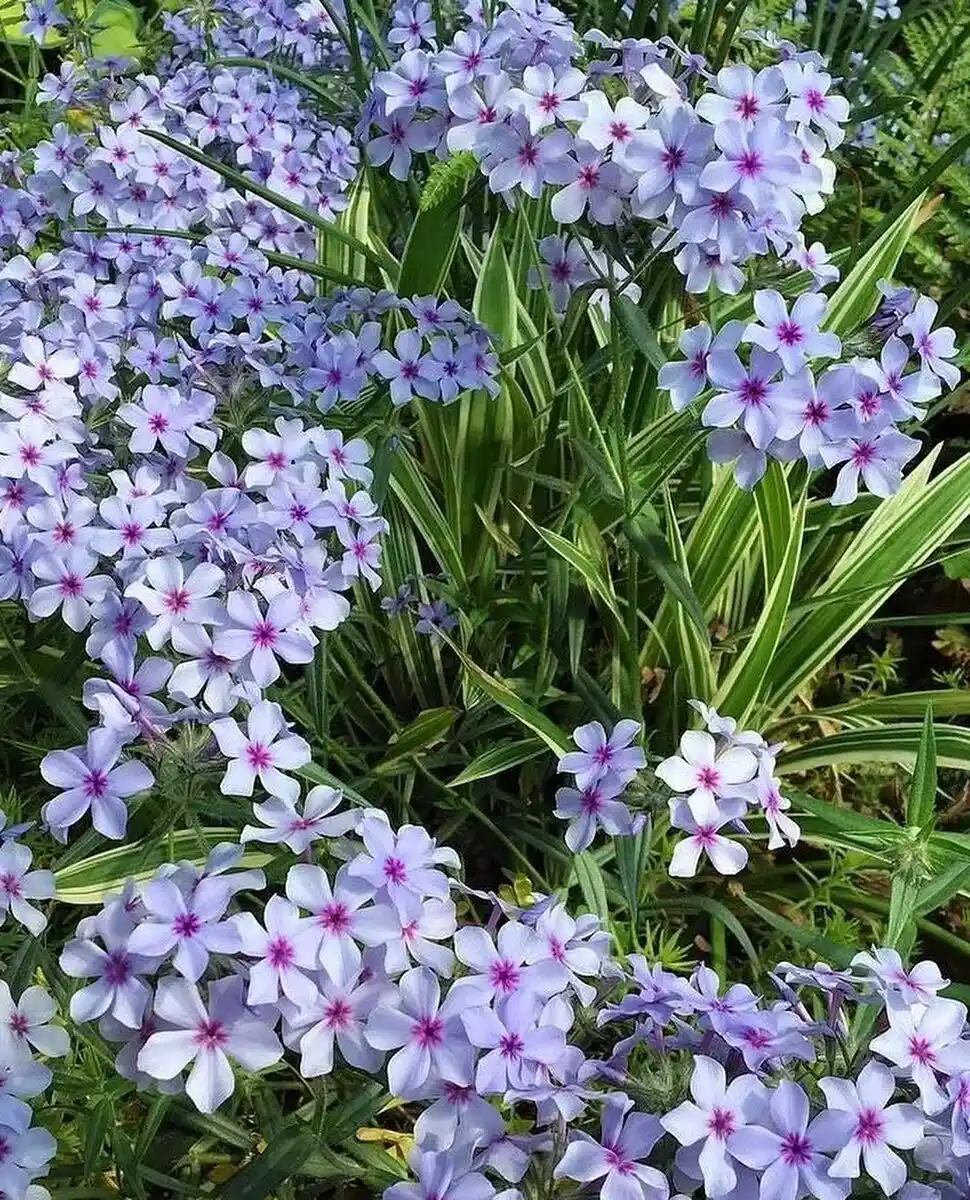
Type: Perennial | USDA Zones: 3–8 | Sun: Dappled shade to deep shade | Soil: Moist, rich, well-drained | Bloom: Early to late spring | Colors: Sky blue/lavender | Height: 12–15 in | Scientific name: Phlox divaricata
Nothing beats those soft blue mats in April–May. Woodland phlox threads between bleeding heart and ferns, offering gentle nectar in the earliest part of the season. It tolerates deeper shade than many bloomers and helps stitch a continuous carpet along path edges.
Shear lightly after bloom if you want tidier mounds; otherwise let it wander a bit. It reads dreamy and naturalistic—perfect for a woodland shade flowers that attract hummingbirds vignette.
Toad Lily (Tricyrtis formosana) — late-season “orchids” for cool shade
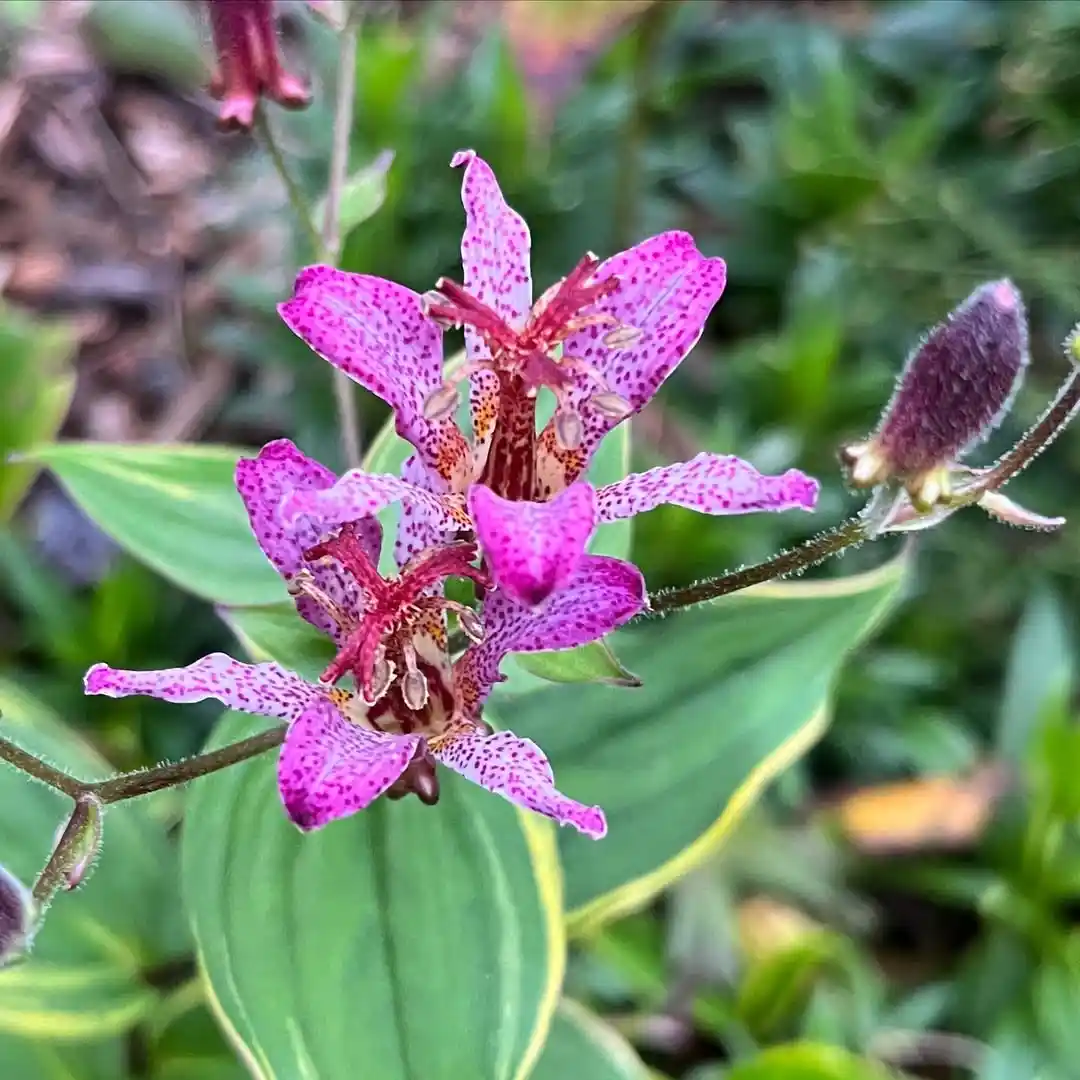
Type: Perennial | USDA Zones: 4–9 | Sun: Full to partial shade | Soil: Fertile, well-drained, moist | Bloom: Late summer to fall | Colors: White to pale lavender with purple spots | Height: ~3 ft | Scientific name: Tricyrtis formosana
When autumn whispers through the trees, toad lilies open speckled, orchid-like blooms right when hummingbirds appreciate a final nectar bump. Plant near a path so you can admire the intricate petals up close. They thrive in consistent moisture and cool shade; mulch to keep roots comfortable.
Design-wise, they’re the jewelry layer in a shade flowers that attract hummingbirds bed—unexpected, elegant, and conversation-starting.
Wishbone Plant (Torenia fournieri) — nonstop color engine for baskets and borders
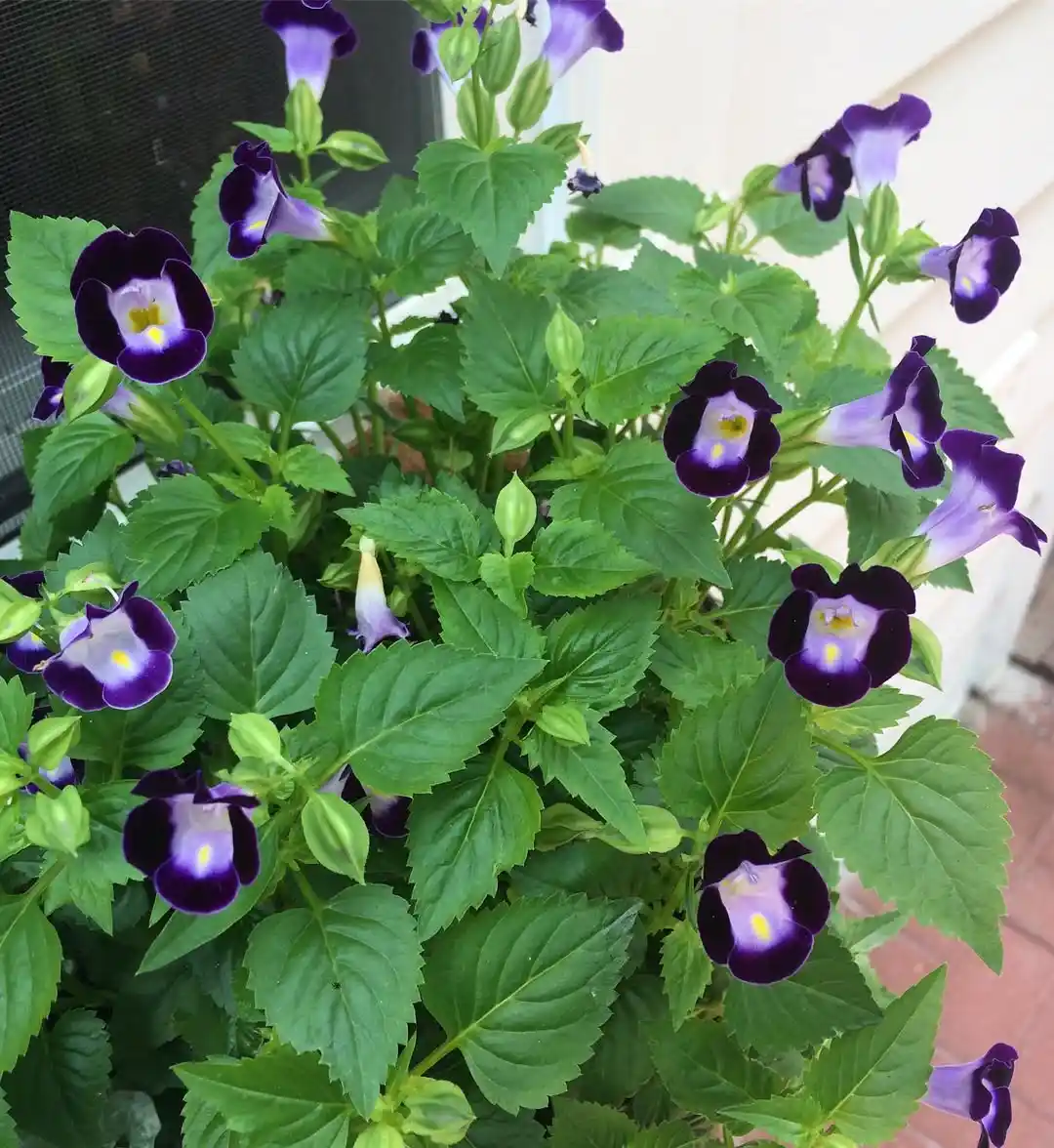
Type: Annual (most regions) | USDA Zones: 10–11 | Sun: Partial shade | Soil: Moist, fertile, well-drained | Bloom: Spring to fall, continuous | Colors: Pink, violet, purple, yellow | Height: ~12 in | Scientific name: Torenia fournieri
Torenia thrives where many annuals sulk—cool, shaded nooks. Its snapdragon-like flowers churn out for months, delivering reliable nectar for quick hummingbird drive-bys. Use it to edge paths, spill from shady window boxes, or fill that tricky north-side planter that begs for cheer.
Keep it watered during heat spells and trim lightly to refresh the flush. It’s one of the easiest “plug-and-play” shade flowers that attract hummingbirds for renters and busy gardeners.
Salvia ‘Black and Blue’ (Salvia guaranitica) — moody blue wands, shade-tolerant and long-blooming
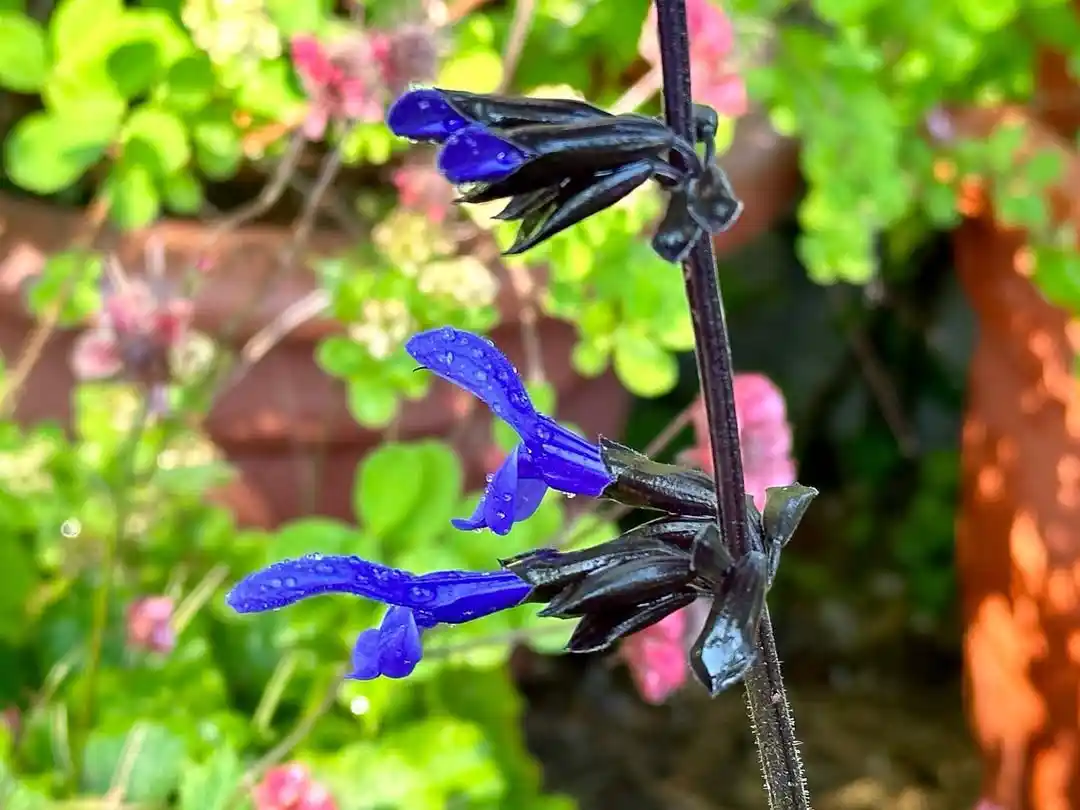
Type: Perennial in warm zones, grown as annual elsewhere | USDA Zones: ~7–10 for longest season | Sun: Part shade | Soil: Average, well-drained | Bloom: Late spring to frost | Colors: Deep cobalt blooms with near-black calyces | Height: ~3 ft | Scientific name: Salvia guaranitica (‘Black and Blue’)
Dark, dramatic, and absolutely irresistible to hummingbirds, ‘Black and Blue’ pushes color deep into the season—even in quieter corners with dappled light. Give it breathing room and light pinching early on for a fuller silhouette.
This is my go-to mid/late-season fuel bar in a shade flowers that attract hummingbirds theme: pair with toad lily and cardinal flower for a moody, modern palette.
Coral Trumpet Honeysuckle (Lonicera sempervirens) — shade-tolerant vine with classic tubes
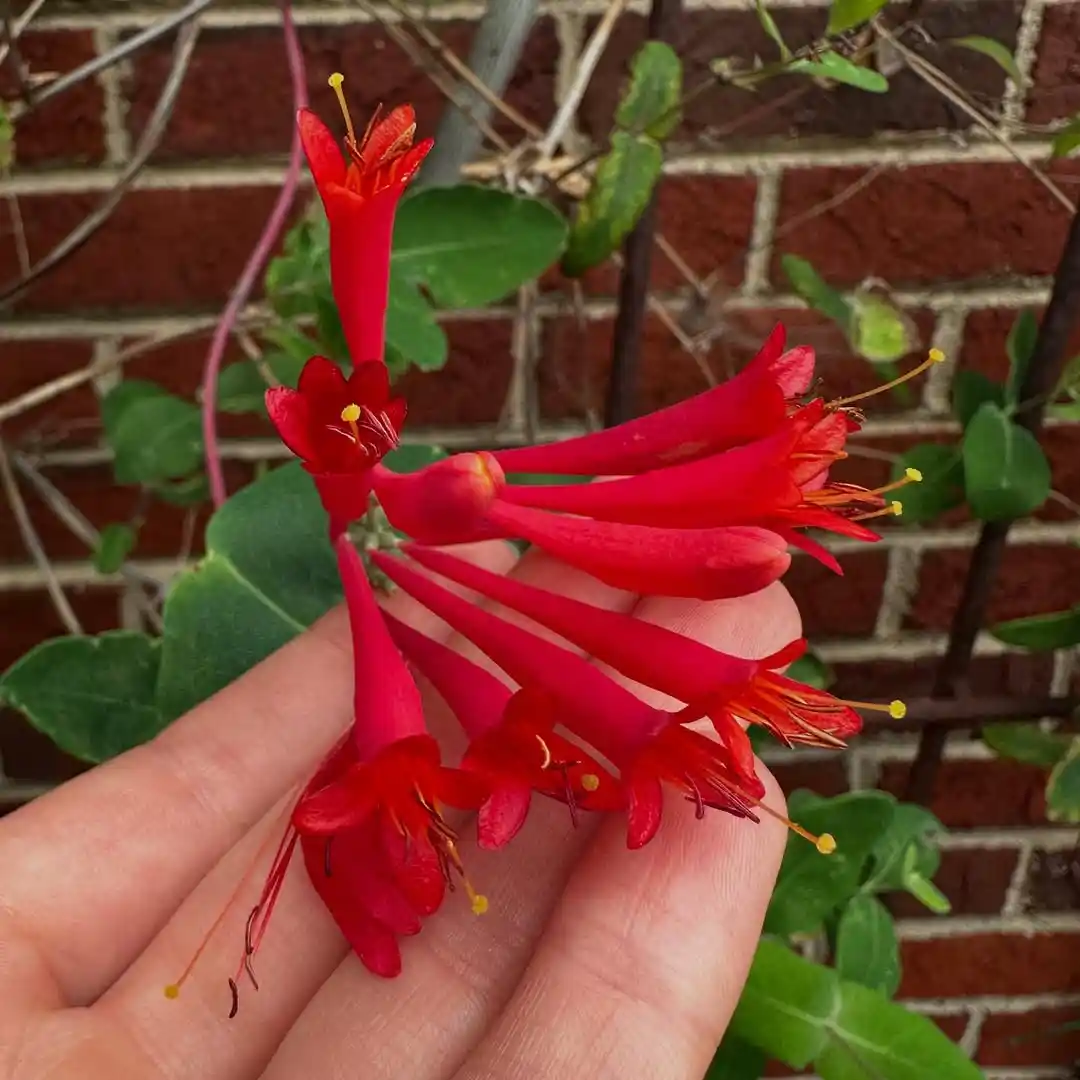
Type: Woody vine | USDA Zones: 4–9 | Sun: Full sun to part shade | Soil: Rich, well-drained | Bloom: Early spring to frost in waves | Colors: Orange-red tubular clusters | Height: 8–20 ft (trained) | Scientific name: Lonicera sempervirens
Train this native vine on a shady trellis or arch and you’ll get long strings of nectar-packed tubes from spring through fall. It’s a textbook hummingbird plant that handles part shade like a champ—perfect along a north fence or arbor. Provide a sturdy support and prune lightly after flushes to keep blooms coming.
Place a shallow birdbath nearby and you’ve basically set up an all-day lounge for your local hummers.
Lobelia for Shady Containers — cool blues as a hummingbird accent
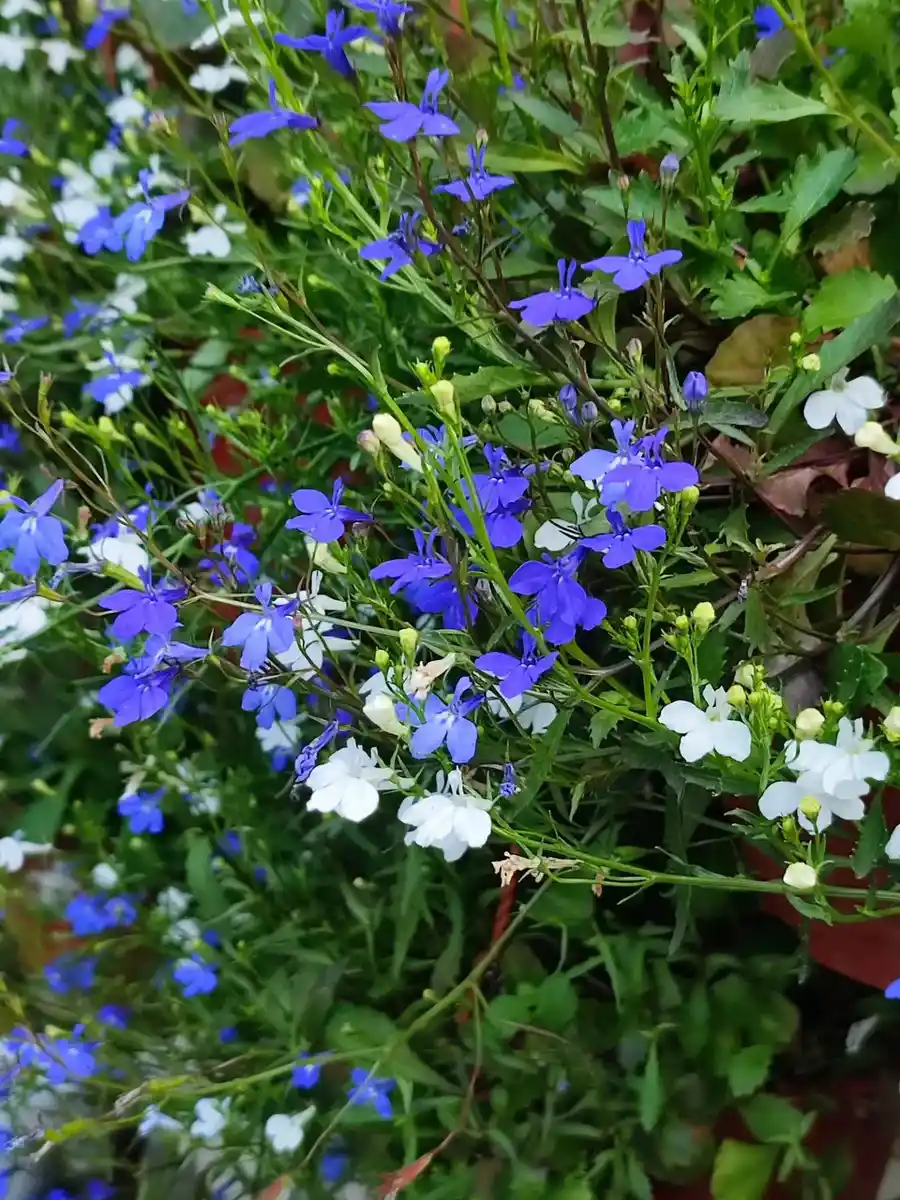
Type: Annuals/perennials (var. dependent; here, decorative container lobelias) | Sun: Partial shade | Soil: Moist, well-drained (great in baskets) | Bloom: Spring–summer | Colors: Typically vivid blues | Scientific name: Lobelia spp.
Blue lobelias in hanging baskets aren’t the classic “red tube,” but as part of a mixed shady container they add color and frequent sipping stops—especially when you blend them with fuchsia or dragon wing begonias. Keep baskets evenly moist; shade keeps them from wilting and extends the show.
Use them as the cool-toned foil in your shade flowers that attract hummingbirds pots while bolder blooms bring the flashy nectar.
Astilbe (Astilbe spp.) — feathery plumes that glisten in low light
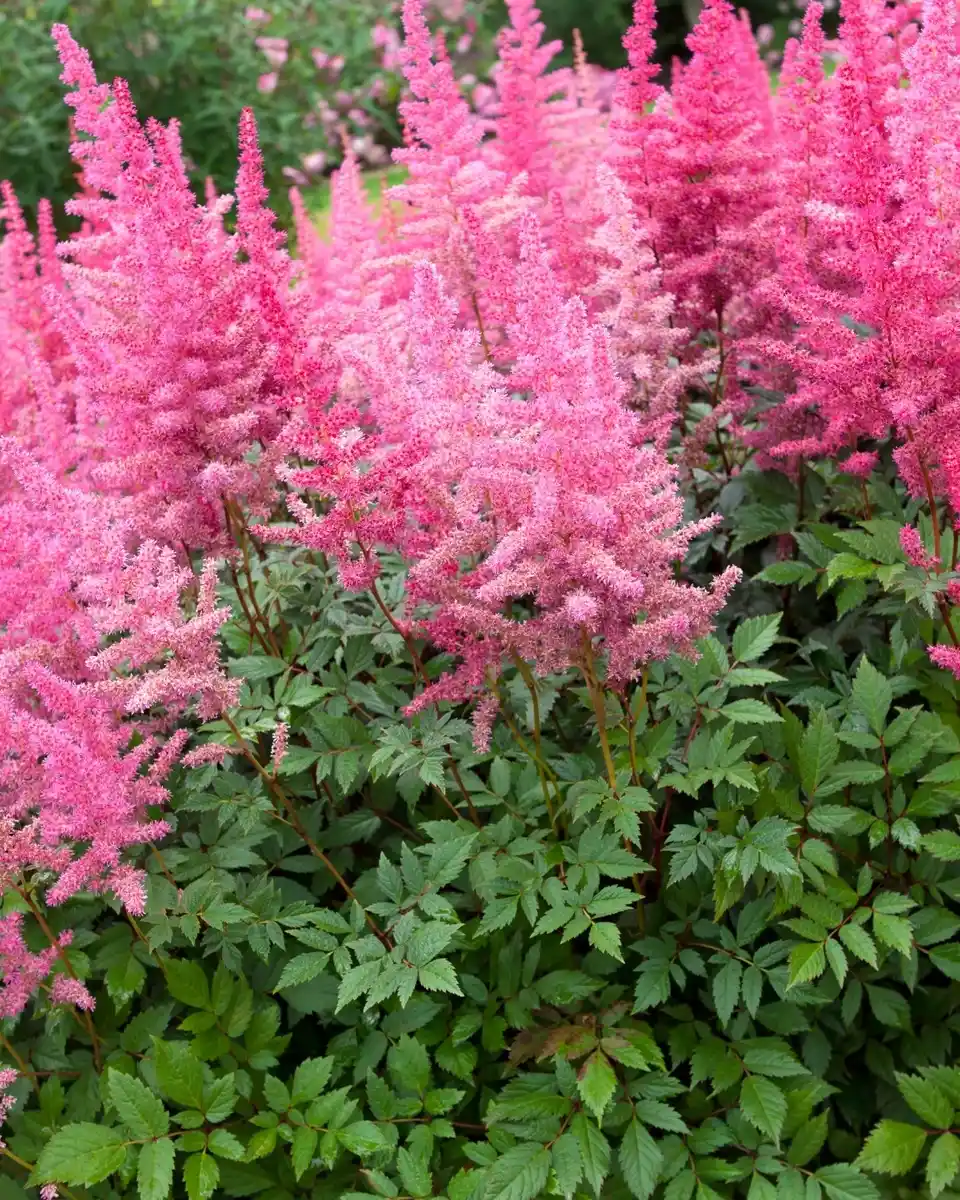
Type: Perennial | Sun: Partial to full shade | Soil: Moist, rich, well-drained | Bloom: Early to mid-summer | Colors: Pinks, whites, reds | Scientific name: Astilbe spp.
Astilbe’s plume-like flowers look like soft fireworks in dim light and help round out the nectar menu in early summer. It’s also a texture master—those ferny leaves and fluffy spikes make a shady border feel layered and luxe. Keep moisture steady (this is a mulch-loving plant). It’s gorgeous with hosta, coral bells, and turtlehead.
For a romantic shade flowers that attract hummingbirds feel, interplant pink astilbes with white bleeding hearts beneath a small tree and add a simple gravel path for contrast.
How to Stage a Foolproof Shade Hummingbird Bed (real-life, pretty, low-fuss)
Step 1 — Start with a structure trio
-
Anchor: Red buckeye or a trellised coral honeysuckle to add height.
-
Mid-layer: 3–5 clumps of salvia ‘Black and Blue’, cardinal flower, or columbine.
-
Edge: Coral bells, woodland phlox, and wishbone plant to guide the eye along paths.
Step 2 — Plan the bloom relay
-
Spring: Columbine, bleeding heart, woodland phlox.
-
Early/Mid-Summer: Coral bells, astilbe, hosta, salvia.
-
Late Summer/Fall: Cardinal flower, turtlehead, toad lily, dragon wing begonia, fuchsia.
Step 3 — Soil, water, and mulch
Shade is root-competition land. Work in compost, water deeply, mulch 2–3 inches, and group thirstier plants (turtlehead, cardinal flower) where you can reach with a hose.
Step 4 — Containers as “nectar satellites”
Hang fuchsia and lobelia by the seating area; plant wishbone plant and dragon wing begonia in porch planters. Refill and deadhead on your coffee rounds.
Aesthetic Combos (because pretty matters)
Soft Woodland Pastels
Bleeding heart + woodland phlox + white hosta blooms = gentle, romantic shade flowers that attract hummingbirds in spring.
Bold & Modern
Salvia ‘Black and Blue’ + cardinal flower + deep-purple coral bells for color-block drama in dappled light.
Cottage Glow
Columbine + coral bells + astilbe + wishbone plant for soft layers that hum with life from April through August.
Quick Species Reference — Shade Flowers That Attract Hummingbirds (Mini Recap)
-
Spring stars: Columbine, bleeding heart, woodland phlox.
-
Summer engines: Coral bells, hosta, salvia, dragon wing begonia.
-
Late-season boosters: Cardinal flower, turtlehead, toad lily; add fuchsia baskets for constant nectar.
-
Structural accents: Red buckeye (small tree) and weigela (shrub), plus coral trumpet honeysuckle on a trellis.
FAQ: Shade Flowers That Attract Hummingbirds
1) Do hummingbirds really visit flowers in shade, or do they prefer sun?
They visit both. Many classic nectar plants love sun, but woodland and part-shade species—columbine, coral bells, bleeding heart, woodland phlox, toad lily—offer dependable nectar under trees. Shade also gives birds a cool rest stop midday.
2) What are the easiest shade flowers that attract hummingbirds for beginners?
Start with coral bells and impatiens for quick color; add columbine for spring magic and hosta for summer blooms; then tuck in fuchsia baskets for reliable sips near the patio.
3) Which shade choices bloom the longest?
For long runs in shade/part shade: salvia ‘Black and Blue’ (late spring to frost), fuchsia (with feeding), dragon wing begonia (spring to frost), and wishbone plant (spring to fall).
4) My shade is dry because of tree roots—what should I plant?
Favor drought-tolerant shade partners (heuchera/coral bells), use extra compost, and water slowly but deeply. In very dry zones, go heavier on containers (fuchsia, lobelia, torenia) where moisture is easier to control.
5) Can I grow a hummingbird vine in partial shade?
Yes—coral trumpet honeysuckle (Lonicera sempervirens) handles part shade and flowers in repeated waves from spring to frost if you provide a good trellis and occasional pruning after bloom.
6) What about late-season nectar in the shade?
Cardinal flower, turtlehead, toad lily, and fall-leaning fuchsia help carry your shade garden into late summer and early fall—perfect for southbound migrants.
7) Are there shade shrubs/trees that help?
Yes—red buckeye (small tree) throws up nectar-rich red clusters in spring, and weigela offers trumpet blooms in late spring with possible rebloom. Both can work at shade margins or bright shade.
8) How do I arrange plants so hummingbirds stay a while?
Think layers: a trellis or small tree for perching, mid-height nectar spires (salvia/cardinal flower), and edging mounds (coral bells/woodland phlox). Add a shallow water source within 15–20 feet.
9) Can I mix annuals and perennials in shade for hummingbirds?
Absolutely. Use perennials for backbone (columbine, bleeding heart, hosta, woodland phlox, toad lily) and annuals for continuous bloom (impatiens, dragon wing begonia, torenia, fuchsia baskets).
10) Which colors pull hummingbirds best in shade?
Red is a classic signal—cardinal flower, red buckeye, red columbine forms, red begonias—but pinks and purples (fuchsia, coral bells, lobelia blues) round out the buffet beautifully.
11) Do hosta flowers actually help?
Yes. While we grow hosta for foliage, their tubular mid/late-summer flowers are nectar sources. Plant a few fragrant varieties along paths so you (and the birds) don’t miss them.
12) What’s a simple 5-plant starter list for deep shade?
Bleeding heart + woodland phlox (spring), hosta (summer), coral bells (foliage + nectar), and toad lily (late). Add a fuchsia basket if you have a porch.
13) Any safety notes?
Red buckeye parts are toxic if ingested; site away from pets/livestock and always supervise kids in the garden.
14) How do I keep blooms coming without fuss?
Feed containers lightly every 2–3 weeks; deadhead where it helps (fuchsia, salvia); water in the morning; refresh mulch midseason.
15) Can I rely only on feeders in shade?
Feeders are great supplements, but planting a living buffet (flowers + insects) creates a healthier, more natural pit stop—and it’s prettier, too.

